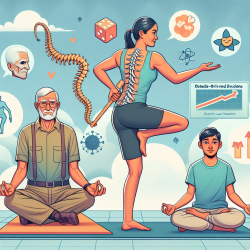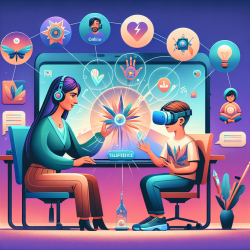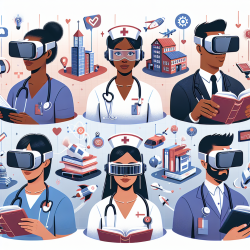Introduction
In the ever-evolving field of speech-language pathology, integrating interdisciplinary approaches can yield significant benefits for clients, particularly children. A recent study titled "Yoga versus education for Veterans with chronic low back pain: study protocol for a randomized controlled trial" provides valuable insights that can be adapted to enhance therapeutic outcomes. This blog explores how the findings of this study can be applied in speech-language pathology to improve outcomes for children, encouraging practitioners to consider data-driven, holistic approaches.
Understanding the Study
The study conducted a randomized controlled trial to compare the effects of yoga and education on Veterans with chronic low back pain. It found that yoga significantly improved back-related function and reduced pain intensity. These findings are crucial, not only for Veterans but also for understanding the broader implications of yoga as a therapeutic modality.
Application in Speech-Language Pathology
Speech-language pathologists can draw parallels from this study to enhance their practice. Here are some ways yoga can be integrated into therapy for children:
- Improving Focus and Attention: Yoga has been shown to enhance concentration and attention, which are critical in speech therapy. Incorporating simple yoga exercises can help children focus better during sessions.
- Reducing Anxiety and Stress: Many children experience anxiety during therapy sessions. Yoga's calming effects can help reduce stress, making therapy more effective.
- Enhancing Motor Skills: Yoga involves various physical postures that can improve motor skills, which are often linked to speech and language development.
- Boosting Confidence: Mastering yoga poses can increase a child's confidence, positively impacting their communication skills.
Encouraging Further Research
The study's findings highlight the need for further research into the integration of yoga in therapeutic settings. Speech-language pathologists are encouraged to explore how yoga can be tailored to meet the specific needs of children with speech and language disorders. By conducting their own studies and sharing results, practitioners can contribute to a growing body of evidence supporting interdisciplinary approaches.
Conclusion
Integrating yoga into speech-language pathology offers a promising avenue for enhancing therapeutic outcomes. By drawing on the findings of the study on Veterans with chronic low back pain, practitioners can develop innovative, data-driven strategies to support children's communication development. As we continue to explore the potential of interdisciplinary approaches, the ultimate goal remains clear: creating the best possible outcomes for children.
To read the original research paper, please follow this link: Yoga versus education for Veterans with chronic low back pain: study protocol for a randomized controlled trial.










